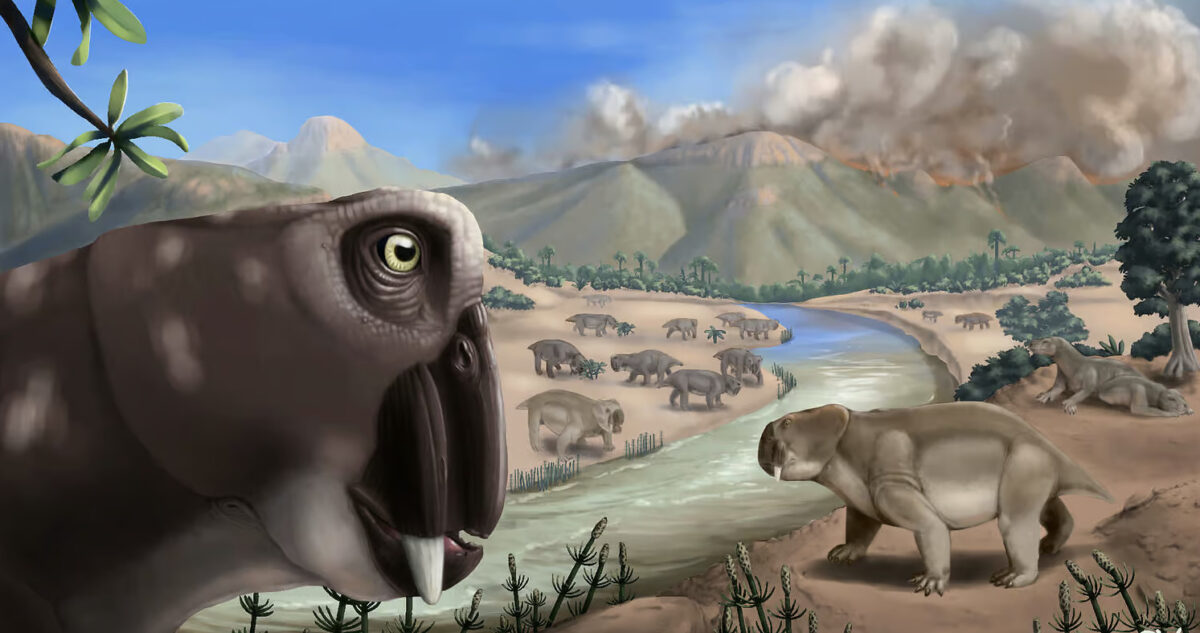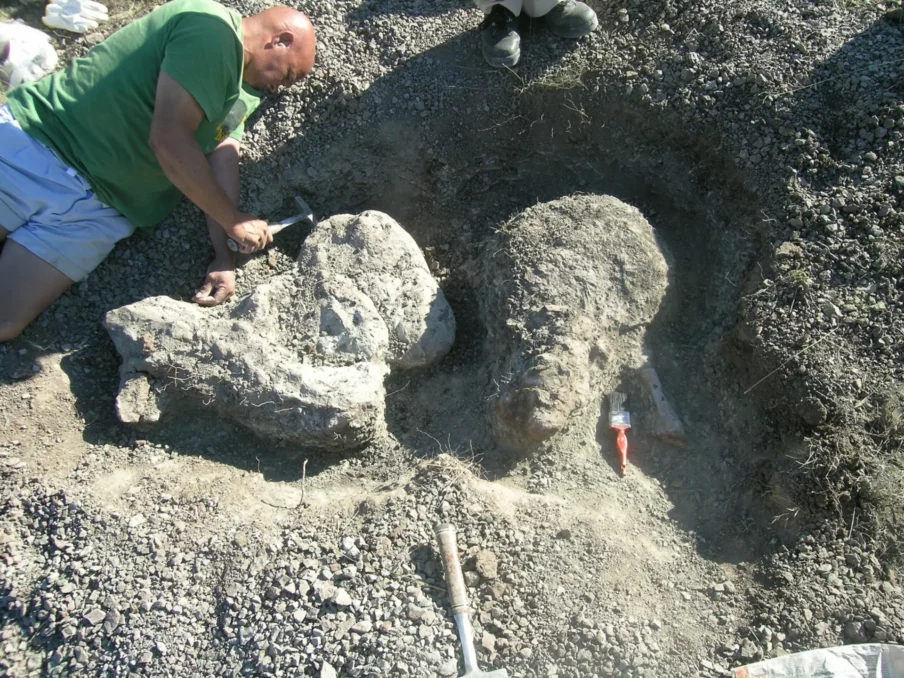The precarious conditions for animals during ‘The Great Dying’ are being revealed by the fossils of a rare saber-toothed predator, ‘Inostrancevia,’ that existed during the worst mass extinction event on Earth. After the Permian epoch, 250 million years ago, a string of super-volcano eruptions in Eurasia released greenhouse gasses that resulted in catastrophic climate change. About 90% of species on Earth vanished due to global warming and oxygen depletion in the oceans and atmosphere. This created the ideal conditions for dinosaurs to emerge and take over the globe until their extinction 66 million years ago.
However, the Permian global extinction event did not happen suddenly. Instead, it took place across a million years, leading scientists to refer to it as ‘The Great Dying.’ The fossil record of ‘Inostrancevia’ is a missing link that helps scientists understand how the creature fought for its survival as the habitat and surrounding environment changed drastically.
Implications of the Discovery
Through the fresh fossil find reported in the journal Current Biology, scientists are convinced that Inostrancevia, a tiger-sized, saber-toothed animal, travelled 7,000 kilometres across Pangea. Inostrancevia filled a gap in ecology that was lacking top predators when it arrived in the southern region of Pangea. The fossil remains reveal that Inostrancevia was a gorgonopsian and rhino-skinned predator resembling the size of a tiger.

(Image of a Lystrosaurus during The Great Dying period, sourced from Cosmos Magazine)
The body of Inostrancevia possessed a peculiar position characteristic of protomammals; it neither sprawled like a reptile nor was it erect like a mammal, but rather a combination of the two. In addition, it lacked the facial muscles found in mammals and was incapable of lactation.
According to the research co-author Christian Kammerer, no direct living descendants of Inostrancevia or other gorgonopsians may be found today. The group completely vanished during the Permian–Triassic extinction, but distant gorgonopsians’ proto-mammal relatives, known as cynodonts, survived and turned into mammals during the Triassic Period.
A Curious Case of Migration

Before the discovery of the fossils in this study, scientists had only discovered Inostrancevia fossils in Russia. Researchers involved in the study were excavating in South Africa’s fossil-rich Karoo Basin when they discovered two enormous, nine to thirteen-foot-long saber-toothed predators in rocks that were formed between 252 and 255 million years ago.
For the previous 100 years, researchers believed that Inostrancevia solely inhabited the Northern Hemisphere and that the Southern Hemisphere was home to another group of predatory mammalian ancestors. The study revealed the mobile capabilities of Inostrancevia. This predator lived during a period of great upheaval and was able to move 7,000 miles across the supercontinent Pangaea to adapt to a new environment before becoming extinct.
Missing Links in the History of Inostrancevia
The fossil record reveals that four distinct animal groups each took turns acting as top predators, becoming extinct and then eventually being replaced around 251.9 million years ago, marking the transition between the Permian and the Triassic eras. Serving as the top predator during the mass extinction, Inostrancevias were very vulnerable to extinction as they required more space for hunting and growing, along with their slow reproduction rate.
The fossils from South Africa and Russia narrate some of Inostrancevia’s story, but researchers are interested in what transpired during that extensive migration between the two regions. Other locations of fossil discoveries in northern Africa could fill the necessary gaps in understanding additional details about how the animals survived. According to the researchers, studying the circumstances that led to Earth’s most significant loss of biodiversity can help us understand what is taking place globally today as a result of climate catastrophe.













